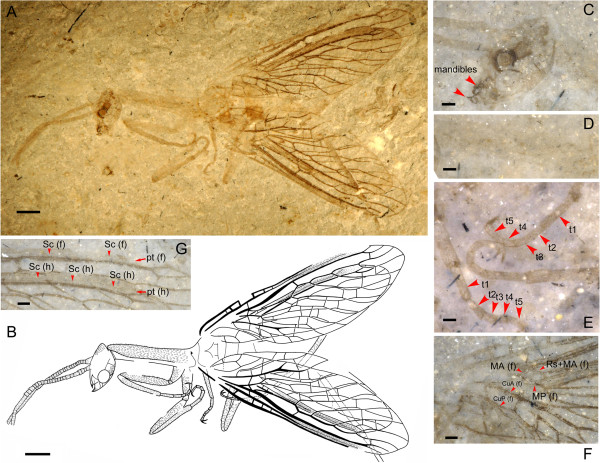A history of lions • Genetics of strawberry flavor • Mechanisms of bacterial adherence • Fossil snakefly • Surveillance leads to rabies reduction • Masculinity and marital violence • Lifestyle medicine for depression
 Evolutionary Biology: A history of lions
Evolutionary Biology: A history of lions
Mitochondrial DNA from museum-preserved lion specimens, including the extinct Barbary lion (Panthera leo leo) and Iranian lion (P. l. persica), as well as lions from West and Central Africa were sequenced and data analysed spanning the historical range of lions. Integrating analysis of mitochondrial DNA from both modern and extinct populations suggests that lions migrated from Africa into Asia more recently than previously thought. The paper highlights that currently the only two lion conservation units recognised by International bodies are African and Asian lions based on categorisation using crude allozyme separation. However, DNA sequence studies have questioned this categorisation and the results presented by the authors further suggest that this dichotomy requires revision.
Genomics: Genetics of strawberry flavor
There is interest surrounding the improvement of the flavor of commercial strawberry varieties. Fruit flavor arises from a combination of sugars, acids and volatile compounds. In this paper, RNAseq and analytical chemistry analysis of the segregating progeny from strawberry cultivars, varying for presence-absence of volatile compounds, identify FaFAD1 as the gene controlling the peach flavor-conferring volatile γ-decalactone. The results presented by the authors demonstrate that gene candidates for strawberry fruit traits may be identified by integrating careful phenotyping and transcriptomic analysis with genetics. Since γ-decalactone is only one of many volatiles that can be analyzed by means of this approach, this study sheds light on the potential for the same dataset to be used to identify candidates for other volatiles.
Microbiology: Mechanisms of bacterial adherence
Autotransporter proteins, the largest known family of virulence factors expressed by Gram-negative bacteria, play a prominent role in a number of processes including invasion, cytotoxicity and survival within eukaryotic cells. BpaC, a novel autotransporter adhesion protein, has been identified in the pathogenic species Burkholderia mallei and Burkholderia pseudomallei. It has been found to mediate adherence of the pathogens to respiratory epithelial cells and is expressed in vivo during the course of aerosol infection. Continued investigation of BpaC may ultimately result in a greater understanding of the virulence of these organisms and contribute to the development of measures that target autotransporters.
Image of the month
 Fossil snakefly, Juroraphidia longicollum, from the Jiulongshan Formation (Middle Jurassic) in Inner Mongolia, China. From “New transitional fossil snakeflies from China illuminate the early evolution of Raphidioptera” Liu et al. BMC Evolutionary Biology 2014, 14:84
Fossil snakefly, Juroraphidia longicollum, from the Jiulongshan Formation (Middle Jurassic) in Inner Mongolia, China. From “New transitional fossil snakeflies from China illuminate the early evolution of Raphidioptera” Liu et al. BMC Evolutionary Biology 2014, 14:84
Infectious Diseases: Surveillance leads to rabies reduction
In the 1990s, rabies re-emerged in China with a gradual increase in number and geographical spread. This led to the introduction of a national surveillance programme in 2005 to investigate various aspects of the rabies outbreaks such as vaccination coverage and social composition. The surveillance was coordinated at the national level by the Chinese Center for Disease Control (CCDC). The measures implemented by the government along with the regulation of post-exposure prophylaxis quality and improved management and vaccination of domesticated animals have resulted in a reduction in the incidence of rabies in China.
Women’s Health: Masculinity and marital violence
In this study, the views of men on masculinity and violence within marriage in Javanese Indonesia were explored. Three different positions of masculinity were identified. Each position held certain views on gender order/equality and acceptance of violence within marriage. It was found that the attitude of men towards violence within marriage differs according to their views on masculinity, which are in turn influenced by cultural and social adaption as well as religious teachings.
Psychiatry: Lifestyle medicine for depression
Over the past three decades, the prevalence of depression appears to have increased. There is now compelling evidence regarding the involvement of a range of lifestyle factors in the pathogenesis of depression. In this paper, Prof Michael Berk and colleagues review a variety of lifestyle modifications that may have potential front-line clinical application alongside pharmacotherapies and psychological techniques to better manage depression. The authors discuss the major components of Lifestyle Medicine consisting of evidence-based adoption of a number of factors including physical activity, dietary modification, adequate relaxation and social interaction as well as other potential lifestyle factors such as environmental issues. Though the use of medication and psychological techniques are still encouraged, acknowledgment that lifestyle modification should also be a routine part of treatment and preventative efforts is highlighted.
![]() Follow @BMC_series
Follow @BMC_series
![]() Watch our YouTube channel
Watch our YouTube channel
![]() Browse our list of journals
Browse our list of journals
![]() Subscribe to updates from the blog
Subscribe to updates from the blog
Comments